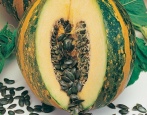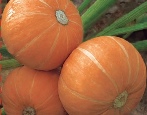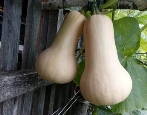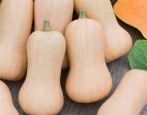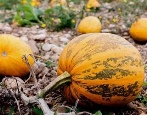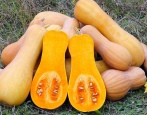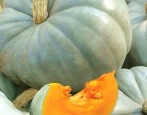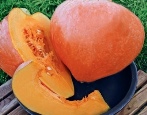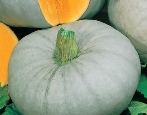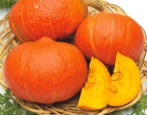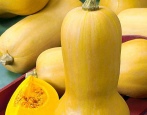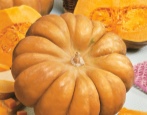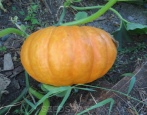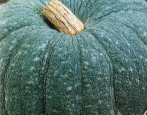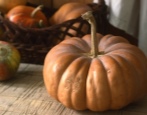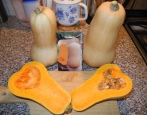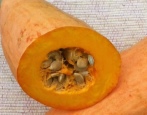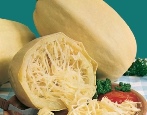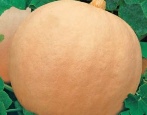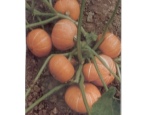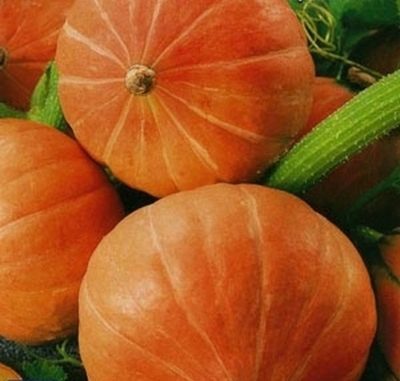
- Authors: Kushnereva V.P., Khimich G.A., Zharova V.P.
- Year of approval: 1999
- Growth type: medium power
- Lash length, m: 2,5-3,0
- Leaf shape: reniform
- Leaf color: green
- The form: turban with a convex apex
- Weight, kg: 1.2-1.9 (according to the originator up to 10)
- Coloration: orange
- Bark: medium, brittle, very soft
Many gardeners choose pumpkins based on the following factors: ripening time, taste, appearance, transportability, keeping quality, and also care. Pumpkin The Russian woman responds with high rates in all these parameters, which is why summer residents often choose her.
Breeding history
The pumpkin is a domestic selection. The authors-breeders were a group of scientists: Kushnereva V.P., Zharova V.P. and Khimich G.A. The culture was approved for use in 1999 and is still popular.
Description of the variety
Pumpkin Russian woman belongs to simple varieties. She has a number of virtues for which she is highly valued. A stable and high yield is noted. Long-term storage does not lose taste, as well as appearance. The fruit does not become soft. Vegetables form and ripen at approximately the same size.
Pumpkin is resistant to a number of fungal diseases and pests.
Due to the elastic shape and excellent skin data, the crop is well transported over long distances.
Among the shortcomings, it is noted that when buying, empty or deformed seeds periodically come across, so it is best to purchase material from trusted sellers and in a special store.
Characteristics of the appearance of plants and fruits
Medium-growing bush. The main wattle grows up to 4 m in length, the lateral ones stretch up to 2.5 m. The stem itself is slightly rounded, of medium density, there is a slight pubescence in the form of hard hairs.
The leaves are large, kidney-shaped, greenish in color.
The root system is strong and well developed. The roots extend up to 2 meters deep. Lateral roots diverge at a distance of up to 3 m.
The buds are large, yellow-orange. From time to time, from too many buds formed, the bush independently throws off some of them.
The vegetables are large, turban-shaped with a protruding top. By weight, one pumpkin reaches from 1.2 to 1.9 kg. According to the originators, the weight of the fruit can increase to 10 kg, but for this it is necessary that the bush is not too thickened by developing pumpkins.
The skin is orange in color, smooth, of medium thickness, fragile and very soft in places.
The pulp is crumbly, tender and not too juicy. The color is bright orange. Sectional wall thickness is 4-6 cm.
The seed nest is orange. Formed placentas are 2-walled, open and loose. Small whitish seeds are formed in them. Narrow elliptical in shape. The number of seeds in the chamber is 0.9%.
Purpose and taste
Pumpkin The Russian woman has a sweetish taste, while the aroma for many resembles a melon. On average, dry matter in the pulp is 8-7%, and sugar is 4.5%. The vegetable contains vitamins of group B, C, as well as carotenoids.
According to the purpose, the variety is universal. It is used for making cereals, juices, mashed potatoes, salads, pastries and soups, as well as for making jam. Less commonly, the pumpkin is canned.
Ripening terms
The culture is early maturing, the vegetative period takes 90-100 days. And the yield falls on July-September.
Yield
The variety Rossiyanka has a high yield.With proper care, from 15 to 20 kg of pumpkins are removed from one bush. On average, from 1 hectare you can get from 88 to 345 centners of vegetables.
Growing regions
According to the originators, pumpkin grows best in the following regions:
Central;
East Siberian;
Volgo-Vyatsky;
Far Eastern.
But the variety is grown in the northwest, and in Siberia, and even in the Urals.
Growing and caring
Pumpkin Russian woman is grown in two well-known ways: seedling or sowing. The seedling method is suitable for regions with cold or late spring and very short summer.
Sowing depends on the climatic conditions of a particular region.
Since the seeds have a very thick shell, the material is pre-soaked. To do this, wrap all good seeds in damp gauze and leave in a dark place. The fabric is re-moistened periodically.
After the grains have hatched, they need to be removed to the refrigerator. This is necessary for subsequent hardening, especially if the crop will be grown in cold climates.
Young pumpkin seedlings have a very weak root system, so it is best to germinate crops in peat pots. The diameter should be chosen from 10 cm.
A small amount of earth is poured into a container and 2 seeds are planted. The depth of the hole should be 2 cm. All pots are covered with foil until the first shoots.
After a while, when the first leaves are formed, it is necessary to choose the strongest seedling out of the two, and remove the second.
Watering young seedlings is necessary as the soil dries up.
Pumpkin loves loose and fertile soil. Therefore, if the soil is too clayey, then it is better to dilute it with sand.
In the fall, it is necessary to dig up the garden bed, adding useful minerals to it. In the spring, the ridge is dug up again, and pits are formed. Their depth is 8-10 cm, and the distance is 60x60 cm.
Planting a pumpkin is best in the evening, when the sun is inactive.
The culture is undemanding to care, but some aspects still need to be observed.
Watering is considered the basis of all agricultural technology. A correctly performed event will allow the plant to develop and grow. For 1 m2, you need to pour 4 liters of water. When the growing season begins, the rate will increase to 7 liters, and subsequently to 11 liters. If there is no precipitation, then the procedure is carried out twice a week.
After watering, the soil is immediately loosened to a depth of 7-8 cm. This will ensure good penetration of not only water, but also fertilizers.
Top dressing. Its frequency directly depends on the condition of the soil. If the site is fertile, then during the season you can feed the pumpkin 2-3 times.
Harvesting is also considered proper care. When collecting, it is necessary to inspect all pumpkins, especially those that are put away for storage. They should be free of dents or spots and should have a whole stem. All other vegetables must be eaten immediately. Pumpkins are stored in the cellar. The air temperature should be up to + 10 ° С, and the average humidity should be 75%. It is best to lay out the fruits on shelves, not close to each other. The stalk should always point upwards.
Disease and pest resistance
The pumpkin Russian woman has good immunity indicators, but with improper care, the culture can be attacked by aphids, powdery mildew, and also become infected with anthracnose, root rot, bacteriosis.
To prevent root rot, when rotting of the roots begins, and then the stem, it is best to spray the bushes with a solution of ash or copper sulfate.
If spots appear on the foliage, then this is a tobacco mosaic. You can get rid of it by applying Bordeaux liquid or Fundazol.
With bacteriosis, small spots appear on the leaves, and the fruits begin to lose their elasticity. It is necessary to spray the bushes with copper chloride.
With powdery mildew, a whitish bloom appears. For the fight, the drug "Topaz" is used.
For the prevention of pests, it is necessary to regularly remove weeds in the beds and in the furrows.
Seed material and soil are processed before planting.
Pumpkin does not like large amounts of nitrogen in the soil, but insects do.
